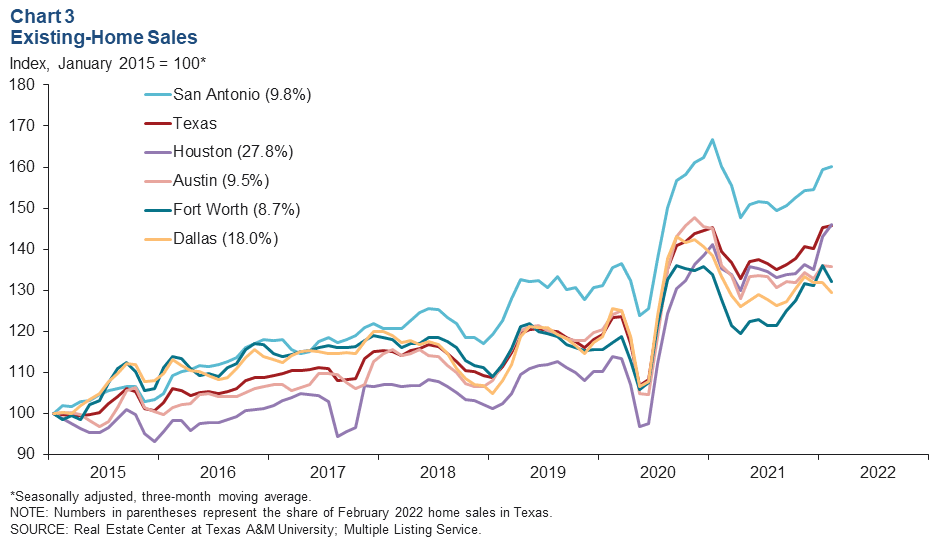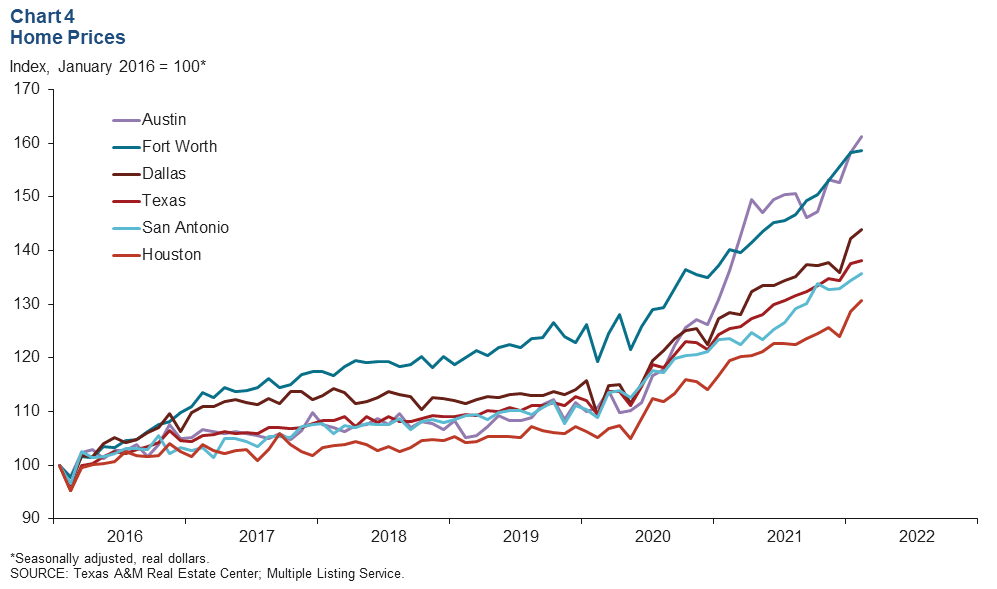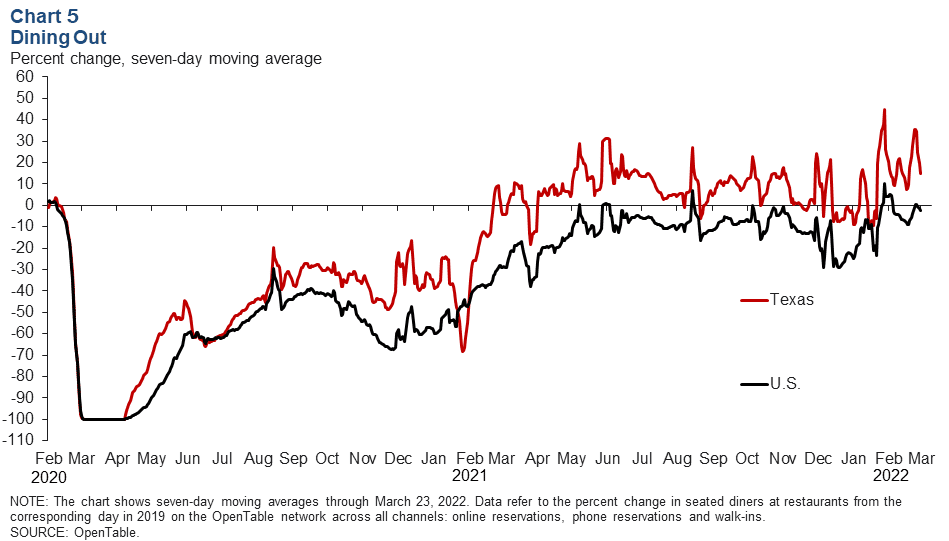Texas Economic Indicators: From the Federal Reserve Bank of Dallas

This data is provided by the Federal Reserve Bank of Dallas.
So far in 2022, the Texas economy has continued to expand, with payroll employment increasing at a rapid clip and the unemployment rate ticking down. Here is a closer look at several underlying economic indicators.
LABOR MARKET
Employment Growth Robust in Most Sectors
Texas employment expanded an annualized 8.9 percent (92,960 jobs) in February after growing an upwardly revised 5.0 percent in January (Chart 1). Job growth spanned most sectors in February, except for other services and government. Oil and gas employment posted the strongest growth at an annualized 23.7 percent, trailed closely by the financial activities and leisure and hospitality sectors. Payrolls in the other services and government sectors contracted 6.7 percent and 3.4 percent, respectively. Unemployment dipped from 4.8 percent in January to 4.7 percent in February. The Dallas Fed’s Texas Employment Forecast is for 3.4 percent job growth this year (December/December).

Goods-Producing Employment Trends Up
In February, the robust growth in Texas employment was reflected in the goods-producing sector (Chart 2). Job growth in that sector edged closer to February 2020 levels as all three subsectors increased. The energy subsector’s 23.7 percent gain (3,190 jobs) was the largest. Manufacturing grew 7.7 percent (5,540 jobs), and construction rose 4.1 percent (2,540). Still, employment in the goods sector remains 4.1 percent, or 78,200 jobs, below February 2020 highs. Meanwhile, employment in the service sector has fully recovered and is 2.3 percent (254,900 jobs) above pre-pandemic levels.

HOUSING
Existing-Home Sales Moderate
Texas existing-home sales fell in February following a sharp increase the previous month. Sales were down in all major Texas metros. However, the three-month moving average of Texas existing-home sales stayed positive, and growth moderated to 0.3 percent in February (Chart 3). The three-month moving average of sales in Houston and San Antonio rose 2.0 percent and 0.5 percent, respectively, while Fort Worth, Dallas and Austin saw declines of 2.9 percent, 1.8 percent and 0.2 percent.

Home Prices Reach Record High
The median sales price of homes across the state rose further in February (Chart 4). The Texas median price (adjusted for inflation) reached a record-high $333,720—a 0.5 increase from January. Among the major Texas metros, Austin experienced the fastest growth, with the median price rising 1.8 percent from January to $515,520. Houston was next, up 1.6 percent to $334,220. The median home price in Dallas and San Antonio rose 1.2 percent to $411,610 and 1.0 percent to $316,250, respectively. Fort Worth had the slowest rate of growth at 0.2 percent as the median price increased to $349,440. Year-over-year median house price growth remained the strongest in Austin at 18.4 percent.

DINING OUT
In March, the number of seated-diner reservations at restaurants remained above 2019 levels statewide but weakened nationwide, based on a seven-day moving average (Chart 5). The U.S. figure faltered throughout March and inched down to 2.4 percent below 2019 levels on March 23. The Texas figure, which recovered in mid-February from the COVID-19 omicron surge, was 15 percent above 2019 levels. As of March 23, Austin and San Antonio had the highest dining-out levels among the major Texas metros at 18.4 percent and 16.2 percent above 2019 levels, respectively. Dining out in Houston was up 8.6 percent, while in Dallas, it decreased 5.2 percent.

For more like this, subscribe to Texas Economic Indicators and other reports from the Dallas Fed.





Everything Is Bigger in Texas—Including the Budget
August 23, 2022